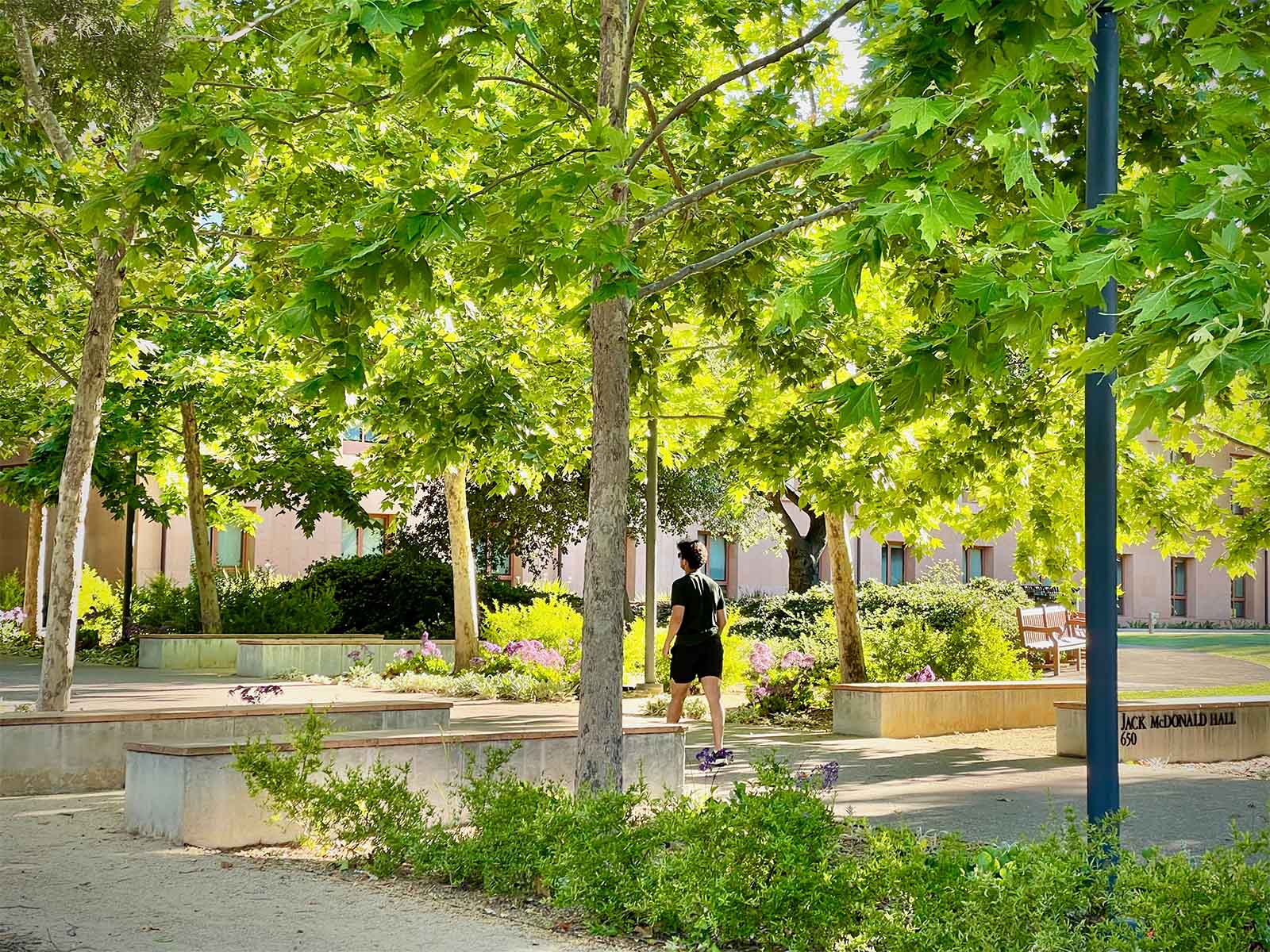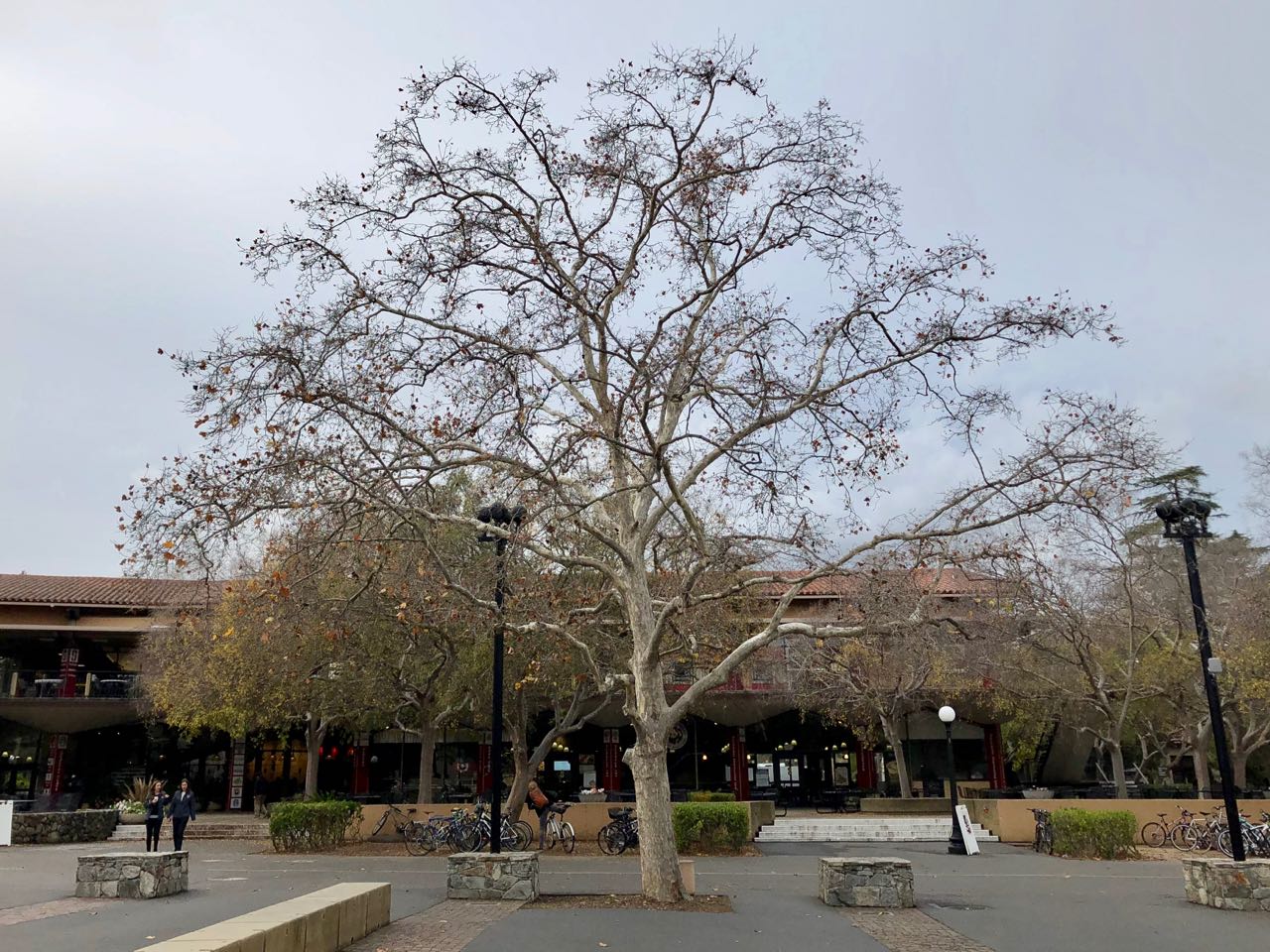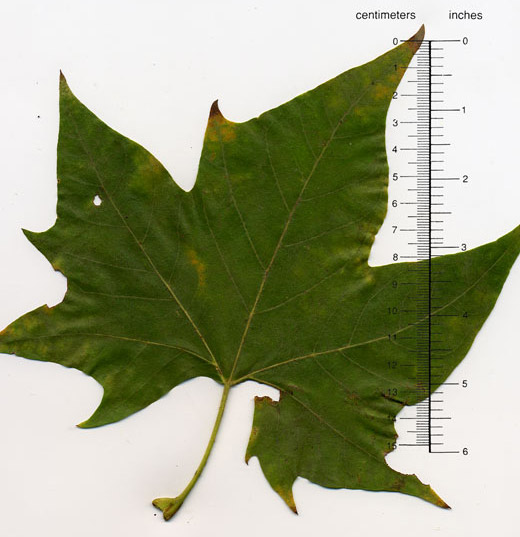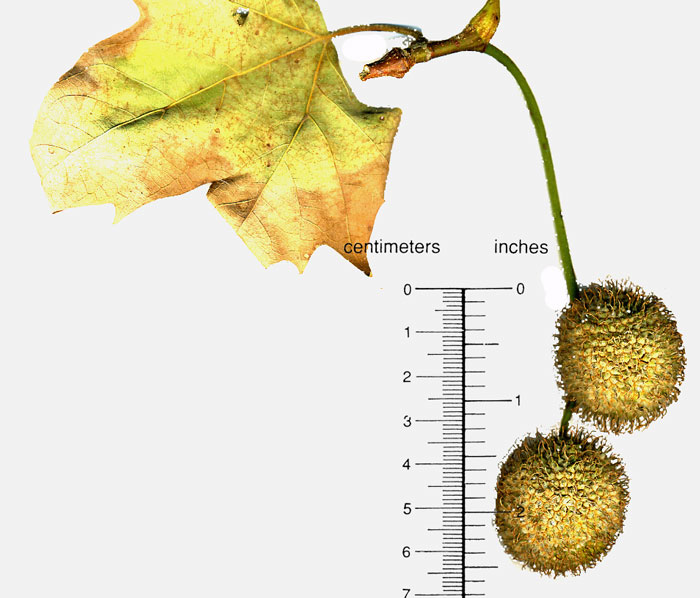Platanus × hispanica
 London plane
London plane


This popular street tree is supposed to have originated in England in the 17th century as a hybrid between the American buttonwood (Platanus occidentalis) and the oriental plane of the Mediterranean. One of its virtues was that soot-encrusted bark flaked off each year. It was introduced to America in colonial times and was the tree adopted for planting on Market Street, San Francisco, after much controversy, and on University Avenue, Palo Alto, where it replaced the glossy privet. There are many hundreds on campus. One group is on Santa Teresa Street around Lagunita Court dormitory, and another in front of Roble Gym. On Galvez Street adjacent to Memorial Hall, one can see remains of a 1938 plantation. Another extensive group is north and west of Frost Amphitheater. London plane is widely used as a street tree in Palo Alto; one of the most beautiful is at 1250 Lincoln Avenue.
The London plane is famous for its reliability; since these groupings are planted in a regular manner it is easy to conclude from their almost universal survival that, indeed, the performance bears out the repute. Landscape architects dealing with trees less likely to survive to maturity, like to group them artistically in irregular triangles and pentagons; should one succumb, the defunct stump is eradicated and the outcome is still artistic. The old campus plantings and those on University Avenue used seedlings. El Camino Real was planted with ‘Bloodgood’, which has proved to be susceptible to sycamore mildew; this causes the leaves to turn yellow and drop off during the summer. ‘Bloodgood’ continues to be used and in 2012 six individuals were planted around the John A. & Cynthia Fry Gunn Building (SIEPR).
London plane tree leaves are generally five-lobed and, if anything, the leaf teeth are coarser and the lobes not as deeply cut as those of the California plane, Platanus racemosa, but the main distinguishing feature is the absence of leafy green stipules at the base of the leaf stalk. Some maples, genus Acer, also have similarly lobed leaves (bigleaf maple is a good example). However, all the main veins to maple leaf lobe tips start from a single point at the base of the leaf; see this venation pattern illustrated and distinguished from that of London plane tree in the Maple photo gallery. The careful observer will notice another significant difference between Platanus and Acer, namely, the branching and leaf arrangement of maples is opposite, while that of plane trees is alternate.
The pendant seed balls are about an inch in diameter. By the time the seed balls litter the street, the light-weight seeds have already been forced out into the air currents by a release mechanism depending on the drying out of the packing, which consists of fine hollow straws.
Along with oaks and olive, Platanus is a significant allergenic tree in our area pollinating in April–June.
About this Entry: The main text of this entry is from the book Trees of Stanford and Environs, by Ronald Bracewell, published 2005. John Rawlings subsequently added the comparison to Acer and the note on allergy (Hailen Mak, MD). Scientific name updated from P. × acerifolia to P. × hispanica Oct 2017 (SP).





